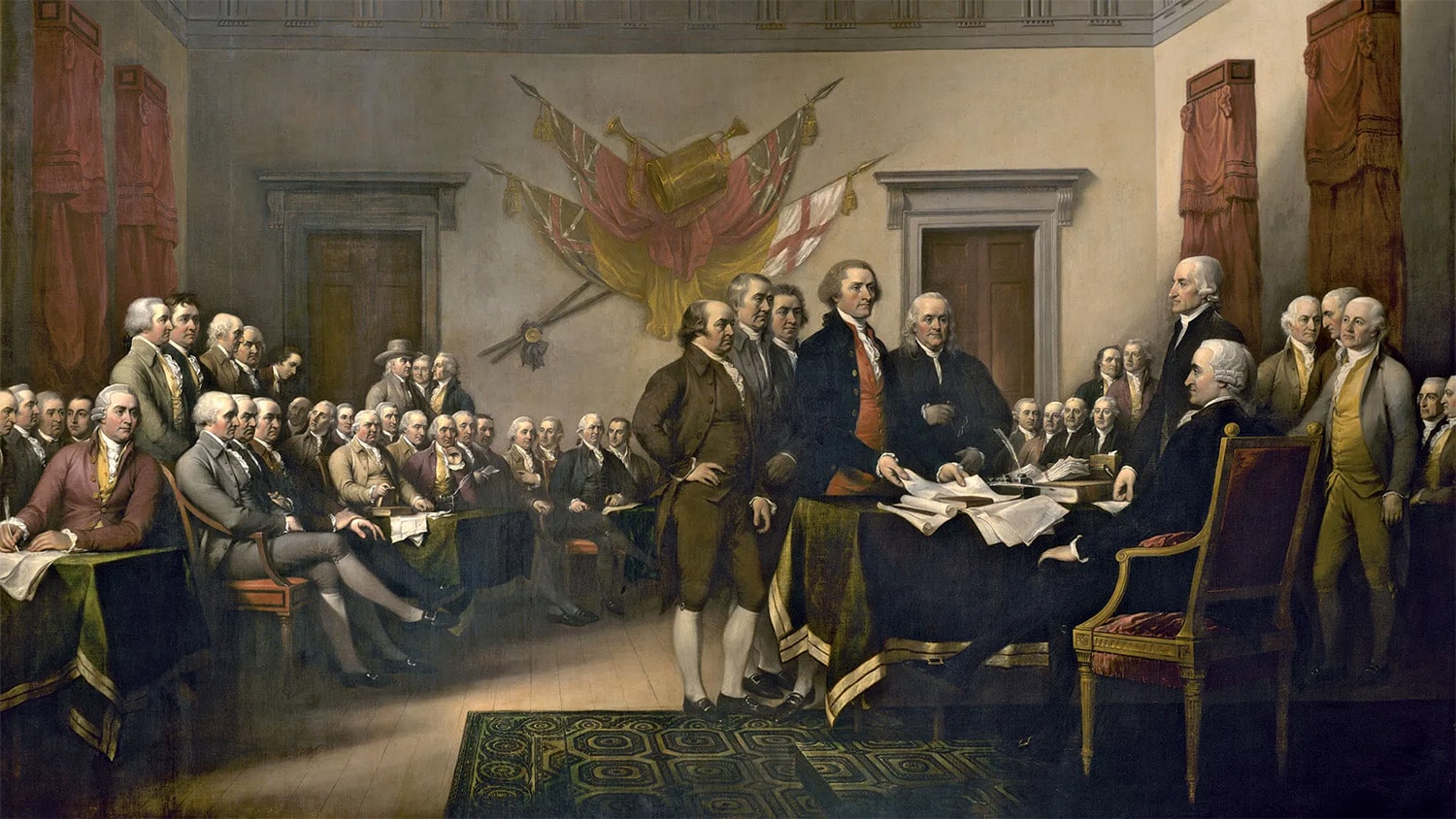
31 interesting facts about Declaration of Independence
- 👁️ 326
The Declaration of Independence stands as a symbol of freedom, courage, and the birth of an independent United States of America. Drafted in a time of tumult and revolutionary fervor, it articulated the colonies’ reasons for seeking independence from British rule. The document, adopted on July 4, 1776, not only declared the thirteen colonies free from British dominance but also laid out the principles of equality and the right to self-governance that would shape the nation’s identity. The story of the Declaration, from its inception to its lasting legacy, is filled with intriguing details and lesser-known facts that highlight its significance in world history. Let’s explore some of these fascinating aspects to gain a deeper appreciation for this pivotal moment in American history.
- The Declaration of Independence was primarily written by Thomas Jefferson in June 1776.
- It was adopted by the Continental Congress on July 4, 1776, which is why the United States celebrates Independence Day on July 4th.
- The document was signed by 56 delegates, representing the thirteen colonies.
- John Hancock, President of the Continental Congress, was the first to sign the Declaration, hence the term “John Hancock” became synonymous with a signature.
- The famous phrase “Life, Liberty, and the pursuit of Happiness” is considered one of the most well-known sentences in the English language.
- Benjamin Franklin, John Adams, and Thomas Jefferson were part of a committee tasked with drafting the Declaration.
- The original document was written on parchment, made from animal skin.
- The Declaration of Independence was not signed on July 4, 1776. Most delegates signed it on August 2, 1776.
- The youngest signer of the Declaration was Edward Rutledge, aged 26, while the oldest was Benjamin Franklin, aged 70.
- The Declaration’s reference to “the Laws of Nature and of Nature’s God” reflects Enlightenment ideas.
- The document was first publicly read on July 8, 1776, in Philadelphia’s Independence Square.
- It contains a list of grievances against King George III, including imposing taxes without consent and dissolving representative houses.
- A rare early printing of the Declaration, known as the Dunlap Broadside, was made the night of July 4th.
- The Declaration of Independence has influenced numerous national declarations around the world.
- The signers knew they risked death as traitors to the British Crown if captured.
- There are 27 total grievances listed against the British Crown in the document.
- The Declaration was hidden during the War of 1812 to protect it from being captured by British troops.
- The term “United States of America” was officially used for the first time in the Declaration.
- The original Declaration is housed in the National Archives in Washington, D.C.
- Nicholas Cage’s character in the film “National Treasure” steals the Declaration, sparking interest in its security.
- An error in a comma in some versions has led to debates over the interpretation of the document.
- The phrase “all men are created equal” has been criticized and debated over its historical context and actual implementation.
- A handprint appears on the bottom left corner of the Declaration, though its origin remains a mystery.
- Richard Henry Lee’s resolution for independence, passed on July 2, 1776, laid the groundwork for the Declaration.
- The Declaration was first printed in German to ensure the German-speaking population in Pennsylvania understood it.
- A full reading of the Declaration takes approximately 9 minutes.
- The document inspired future democratic movements and constitutions worldwide.
- Only two future presidents signed the Declaration: Thomas Jefferson and John Adams.
- Jefferson’s original draft condemned slavery, but it was removed to gain unanimous support.
- The Declaration and the Constitution are often confused, but they serve different purposes in American history.
- The last surviving signer of the Declaration, Charles Carroll, died in 1832 at the age of 95.
The Declaration of Independence not only marked the birth of a new nation but also encapsulated ideals of liberty and democracy that continue to inspire around the globe. Its adoption on July 4th, 1776, was a bold statement against tyranny and an assertion of self-determination that resonates to this day. Through the years, the Declaration has been a symbol of America’s values and its commitment to the principles of equality and rights for all. This historic document remains a testament to the vision, courage, and enduring spirit of those who dared to imagine a free and independent United States.
The Declaration of Independence stands as a symbol of freedom, courage, and the birth of an independent United States of America. Drafted in a time of tumult and revolutionary fervor, it articulated the colonies’ reasons for seeking independence from British rule. The document, adopted on July 4, 1776, not only…